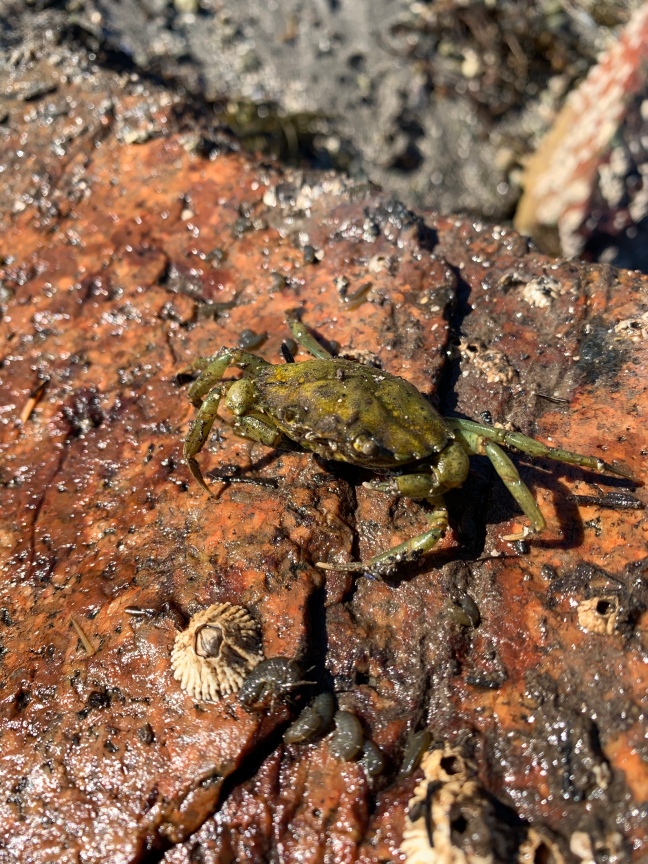by Robert H. & Jack S.
When you were little, did you ever go to the beach and dig for crabs in the sand? Well, it turns out little you was probably looking in the wrong place! Our EES 217 class at the University of Maine traveled to the Schoodic Peninsula of Acadia National Park to investigate the distribution of crabs, especially invasive crabs, within these protected lands.

Our hypothesis was that crab distribution is different depending on substrate (in sand vs. under rocks, etc.) We figured this could help other research groups when they needed to know the best place to collect crab data and provide information about an invasive crab that is new to Schoodic Peninsula, the Asian shore crab. To collect our data, we surveyed two different locations on the Schoodic Peninsula. Both locations were sheltered from the open ocean and shared many of the same characteristics, including a wide variety of substrates.

To keep our data consistent, we decided on some standard rules to follow for data collection. We placed a quadrat (1m x 1m plastic square) about 33 feet from the high tide mark (the part where the ocean was at the highest point during high tide) on one of 4 different substrates we chose. After finding crabs, we then measured their carapace size using a caliper and used a reproductive key to determine if the crabs were actively reproducing or not. After collecting 16 samples of the four different substrates, we headed back to the lab for data analysis. On the second day, we headed out to collect more data but we discovered the high tide brought in much more seaweed overnight. So, decided to examine a new question– what is the effect that seaweed cover has on crab abundance in addition to substrate?

Our first hypothesis, that crab abundance would vary with substrate, was partially supported because we did find different numbers of crabs in different substrates. For example, we found the most crabs in cobble. Our second hypothesis, that crab abundance would depend not just on substrate but also seaweed cover, was also supported. We found that the more seaweed there is on the cobble, the more crabs will be present, while amount of seaweed didn’t matter for crab abundance on sand. Crabs are a major take for predators like seagulls, fish, and other marine animals. Seaweed and cobble likely give the crabs better opportunities to hide from these predators as well as the tide, which can wash them into the sea. When seaweed is abundant, crabs can grab onto it with their claws and hold on so they don’t get a ride from the tide, and potentially be eaten by a predator. 
Fig. 1. We saw that crab abundance depended on both seaweed cover and substrate type. The P-Value on the bottom right tells us this relationship is meaningful and the data we observed is unlikely to be caused by random chance.
So the next time you are at the beach, get your hands dirty and lift up some seaweed covering rocks, you might just find some crabs!